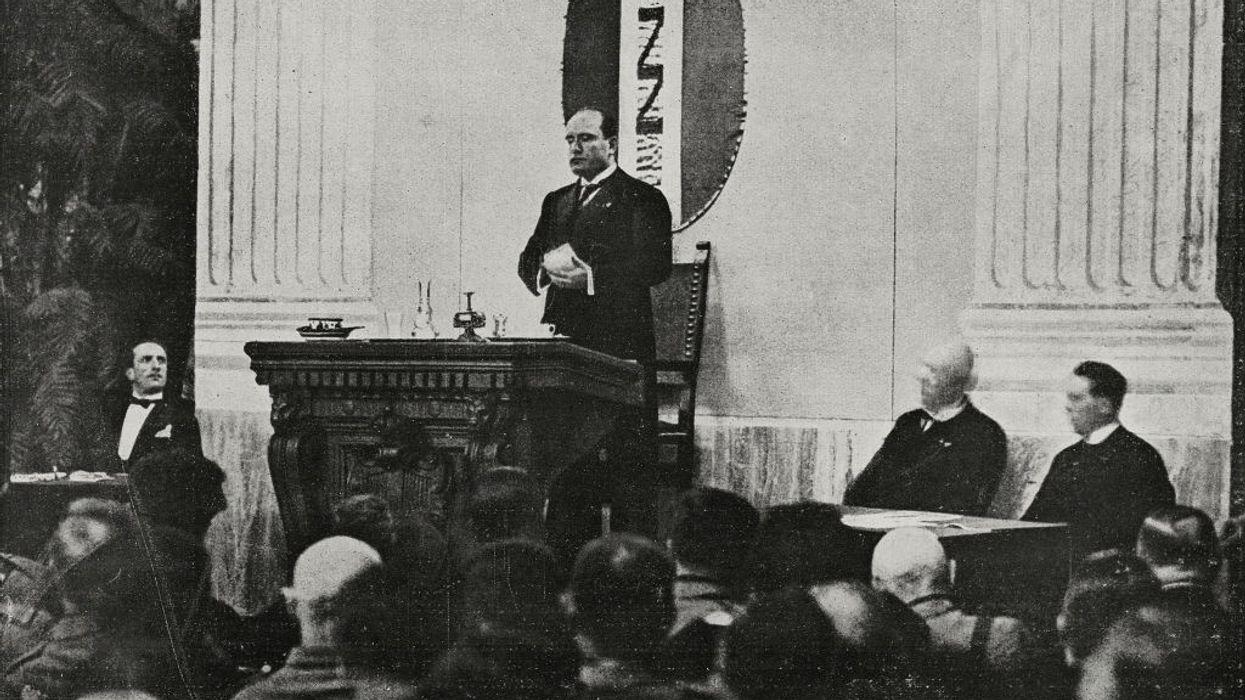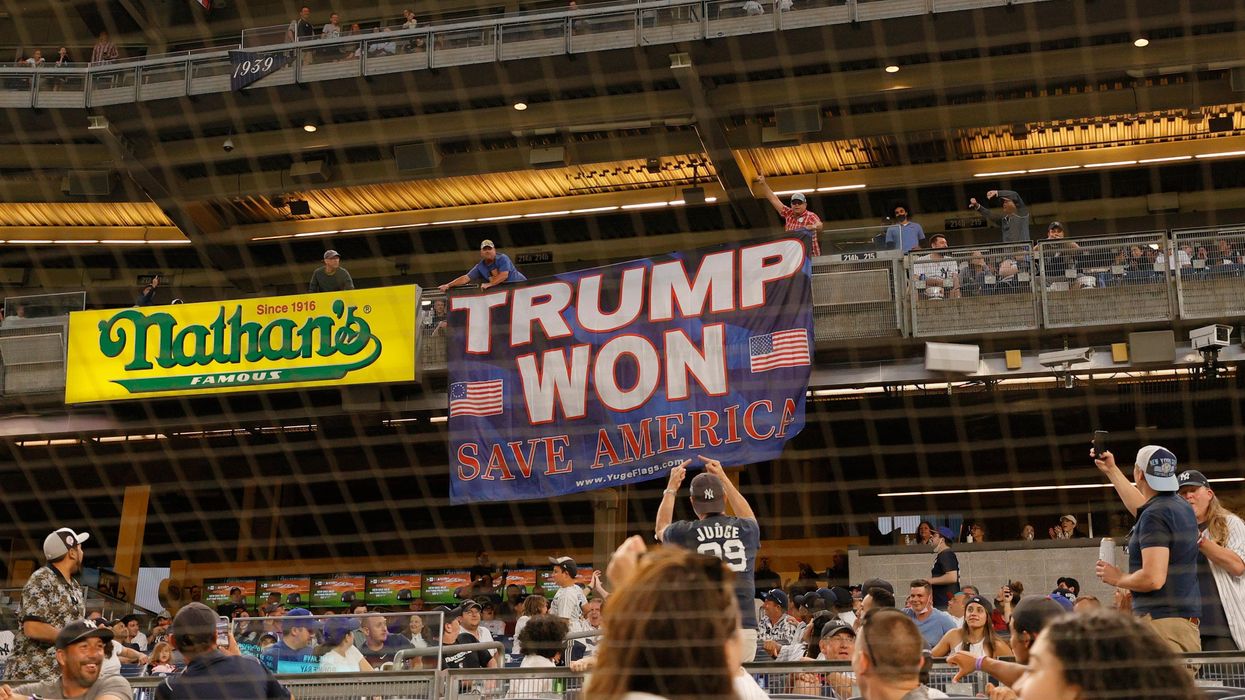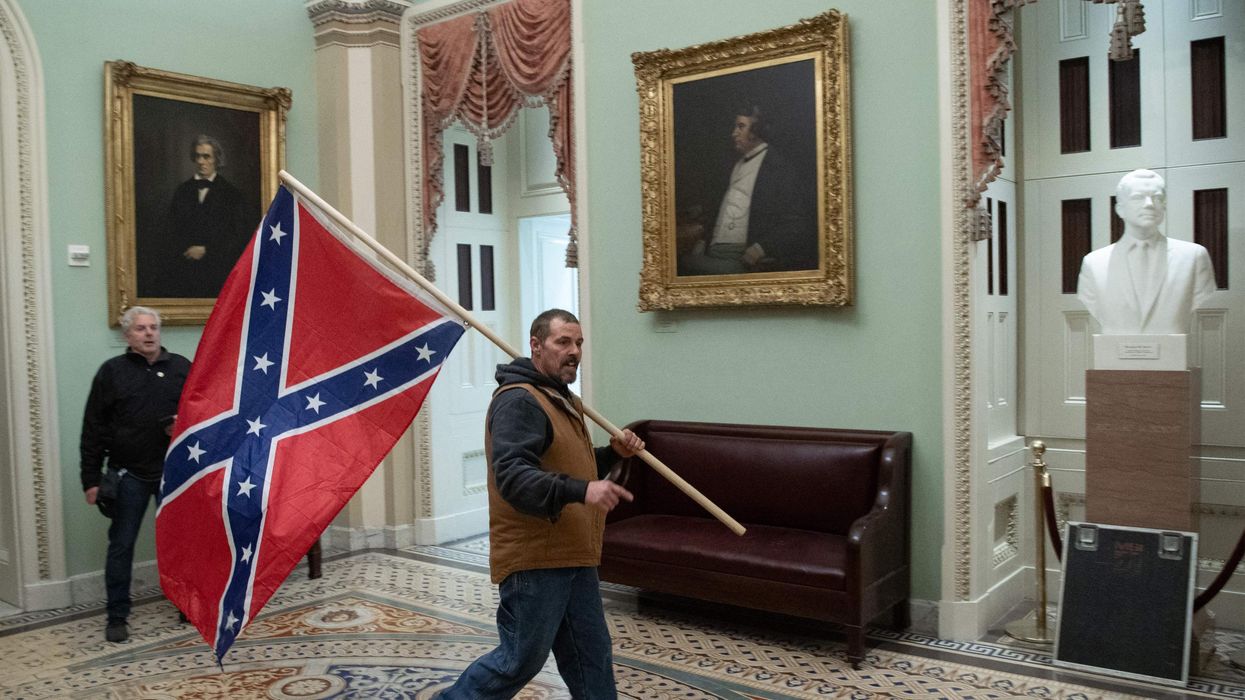100 Years After Mussolini's Dictatorship, a Trumpian US Flirts With the Long Night of Authoritarianism
The comparisons between Mussolini's declaration of dictatorship in 1925 and Trump’s re-election are striking.
In June 1924, Benito Mussolini—the Prime Minister of a tottering Liberal Italy—ordered the assassination of a left-wing Member of Parliament, Giacomo Matteotti. When Matteotti’s body was discovered two months later in a wooded area north of Rome, political rumors and controversies exploded into a full-fledged political crisis for the National Fascist Party. Facing the potential collapse of his coalition government, and with it the loss of his prime ministry, Mussolini resolved to confront his party’s political crisis headlong.
On January 3, 1925, Mussolini delivered a contentious speech in the Chamber of Deputies, intending to bring about a resolution, one way or another, to the so-called “Matteotti Crisis.”
“Gentlemen! The speech that I am about to deliver to you should not, strictly speaking, be considered a parliamentary address,” he arrogantly explained, since a “speech of this type could lead to a vote on policy.” “Let it be known,” the Prime Minister continued, “that I do not seek such a vote” as “I have had too many of those.”
Having established his decidedly anti-democratic intentions, Mussolini explained to his colleagues that Article 47 of the Italian Constitution allowed for the members of the Chamber to “impeach the King’s Ministers” and “bring them before the High Court of Justice” for any high crimes and/or misdemeanors committed. “I formally ask you,” the Duce-in-waiting boldly proclaimed, “is there, in this Chamber or outside of it, someone who would like to apply Article 47 [to me]?”
Mussolini’s cynical invitation, of course, was imbued with the not-so-subtle suggestion of reprisals for anyone who dared speak out against the National Fascist Party, its political violence during the previous six or so years, and no less important, its authoritarian Leader.
Unsurprisingly, nobody stood up to apply Article 47 to Mussolini. And in the absence of any political or judicial consequences for his involvement in the political violence leading up to and including Matteotti’s assassination, Mussolini demonstrated himself to be above law and order in Italy. In short, Mussolini was no longer a Prime Minister—he was a dictator.
During the subsequent two years, a now unleashed National Fascist Party utilized its position to pass a series of laws—known as the “Extremely Fascist Laws”—which brought about an end to multi-party democracy and civil liberties in Italy and, in their place, the legal foundations for a single-party Fascist State.
One century later, Mussolini’s declaration of dictatorship, which inaugurated twenty or so years of democratic backsliding and authoritarianism in Europe, continues to haunt the halls of power in liberal democracies throughout the Western world.
The recent re-election of Donald J. Trump as President of the United States of America serves as a chilling reminder of the appeal of anti-democratic strongmen in times of social, political, and economic flux. Similar to Mussolini one hundred years ago, Trump has demonstrated a contempt for the Constitution and the universal application of law and order.
In a December 2023 exchange with Fox News personality Sean Hannity, for instance, Trump pompously proclaimed his intentions to serve as a dictator on “day one” of his presidency. Many of his followers, too, have glibly embraced this unconstitutional and anti-democratic political rhetoric, going so far as to produce celebratory campaign t-shirts bearing the slogan: “Dictator on Day One.”
In July 2024, moreover, Trump informed the attendees of the Turning Point Believers' Summit in West Palm Beach, Florida that, were evangelical conservatives to help him win the general election in November, “you won’t have to vote any more.”
Perhaps equally as concerning, Trump’s “Make America Great Again” movement has resonated with American neo-fascist groups, including Patriot Front, which frequently holds public marches and rallies bearing MAGA-adjacent slogans, and neo-Nazi groups, one of which recently marched through Columbus, Ohio wearing blackshirts and flying swastika flags, ostensibly in celebration of Trump’s re-election.
Stemming from his roles in the January 2021 MAGA-led insurrection at the Capitol Building in Washington D.C. and the subsequent standoff with the FBI over his illegal possession of classified documents, Trump was, leading up to November 5th, facing 91 felony charges, which, if convicted, would have almost certainly resulted in substantial legal consequences for the twice-impeached POTUS. With his re-election, however, these charges will almost certainly be dropped, due to a longstanding Department of Justice policy of applying legal immunity to serving POTUSes. Like Mussolini before him, Trump is now effectively above law and order in the United States.
In addition to winning the presidency, the now MAGA-dominated Republican Party won majorities in both the House of Representatives and the Senate, providing Trump with what could very well turn out to be a “rubber stamp” legislator for his far-right objectives.
Thus, when Trump is inaugurated as the United States’ 47th president on January 20, 2025—merely three weeks following the centennial of Mussolini’s declaration of dictatorship in Italy’s Chamber of Deputies—he will be in the position to strong arm political, judicial, and military power without any meaningful checks and balances. He will be immune from prosecution while in office, which will motivate him to fulfill the promise he made to the Turning Point Believers’ Summit: to gerrymander our political system in a way that precludes any electoral opposition to the MAGA movement moving forward. Trump will be, as he promised in December 2023, a dictator on “day one.”
And with these, and many more, authoritarian promises fulfilled, Americans will be faced with a significant, and rather urgent, question: If the comparisons between Mussolini’s declaration of dictatorship and Trump’s re-election are so striking, as I have insisted, we may well be witnessing the twilight of American democracy, and the beginning of the long night of authoritarianism in the United States.
And, in a related vein, with authoritarian movements popping up everywhere across the Western world, and the steady erosion of support for international law and order and human rights, are we building a global order based around the liberal democratic values of the United Nations Charter? Or are we increasingly living—like the Europeans of the 1920s and 1930s—in another interwar crisis?


